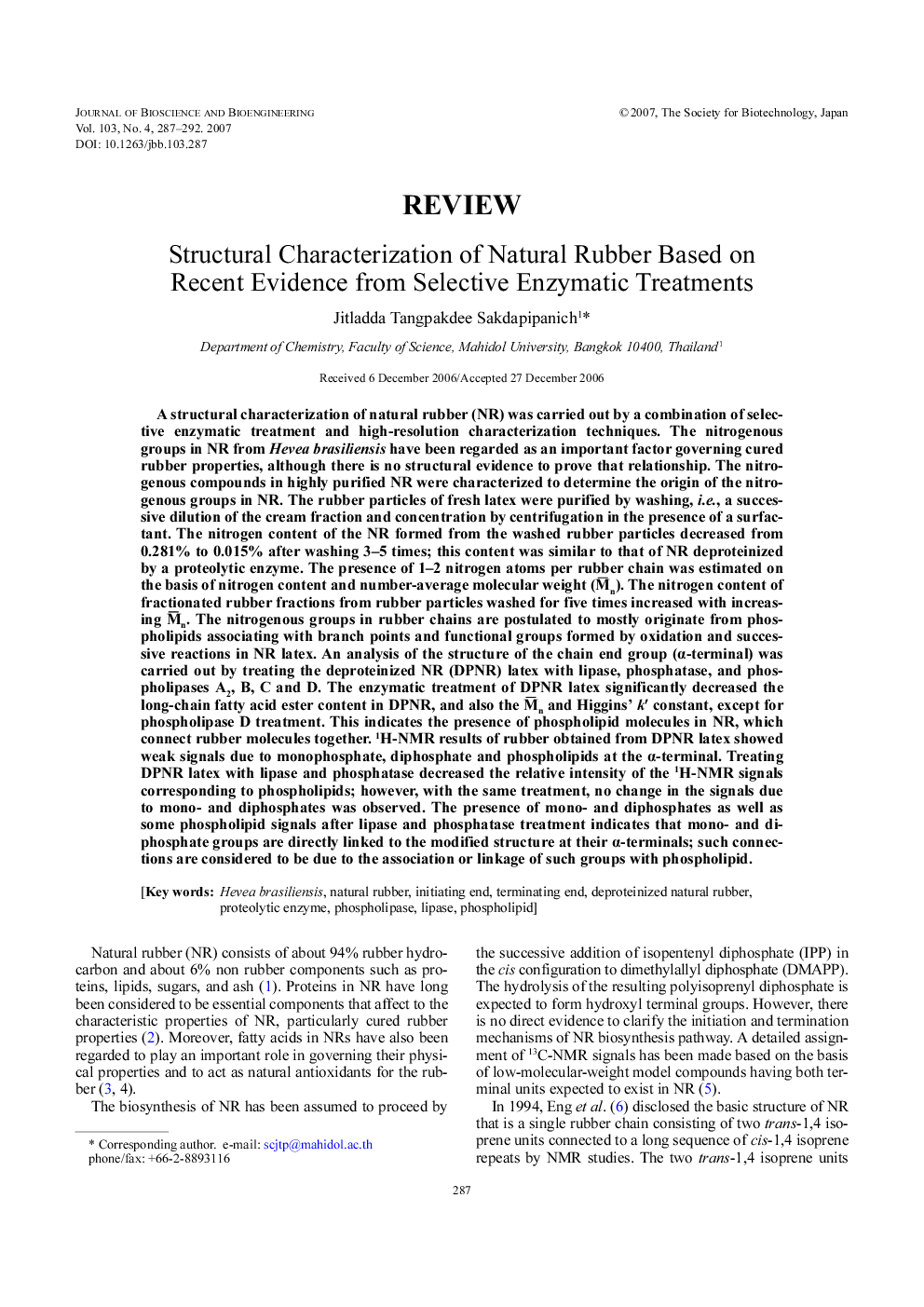| Article ID | Journal | Published Year | Pages | File Type |
|---|---|---|---|---|
| 22272 | Journal of Bioscience and Bioengineering | 2007 | 6 Pages |
A structural characterization of natural rubber (NR) was carried out by a combination of selective enzymatic treatment and high-resolution characterization techniques. The nitrogenous groups in NR from Hevea brasiliensis have been regarded as an important factor governing cured rubber properties, although there is no structural evidence to prove that relationship. The nitrogenous compounds in highly purified NR were characterized to determine the origin of the nitrogenous groups in NR. The rubber particles of fresh latex were purified by washing, i.e., a successive dilution of the cream fraction and concentration by centrifugation in the presence of a surfactant. The nitrogen content of the NR formed from the washed rubber particles decreased from 0.281% to 0.015% after washing 3–5 times; this content was similar to that of NR deproteinized by a proteolytic enzyme. The presence of 1–2 nitrogen atoms per rubber chain was estimated on the basis of nitrogen content and number-average molecular weight (). The nitrogen content of fractionated rubber fractions from rubber particles washed for five times increased with increasing . The nitrogenous groups in rubber chains are postulated to mostly originate from phospholipids associating with branch points and functional groups formed by oxidation and successive reactions in NR latex. An analysis of the structure of the chain end group (α-terminal) was carried out by treating the deproteinized NR (DPNR) latex with lipase, phosphatase, and phospholipases A2, B, C and D. The enzymatic treatment of DPNR latex significantly decreased the long-chain fatty acid ester content in DPNR, and also the and Higgins' k′ constant, except for phospholipase D treatment. This indicates the presence of phospholipid molecules in NR, which connect rubber molecules together. 1H-NMR results of rubber obtained from DPNR latex showed weak signals due to monophosphate, diphosphate and phospholipids at the α-terminal. Treating DPNR latex with lipase and phosphatase decreased the relative intensity of the 1H-NMR signals corresponding to phospholipids; however, with the same treatment, no change in the signals due to mono- and diphosphates was observed. The presence of mono- and diphosphates as well as some phospholipid signals after lipase and phosphatase treatment indicates that mono- and diphosphate groups are directly linked to the modified structure at their α-terminals; such connections are considered to be due to the association or linkage of such groups with phospholipid.
